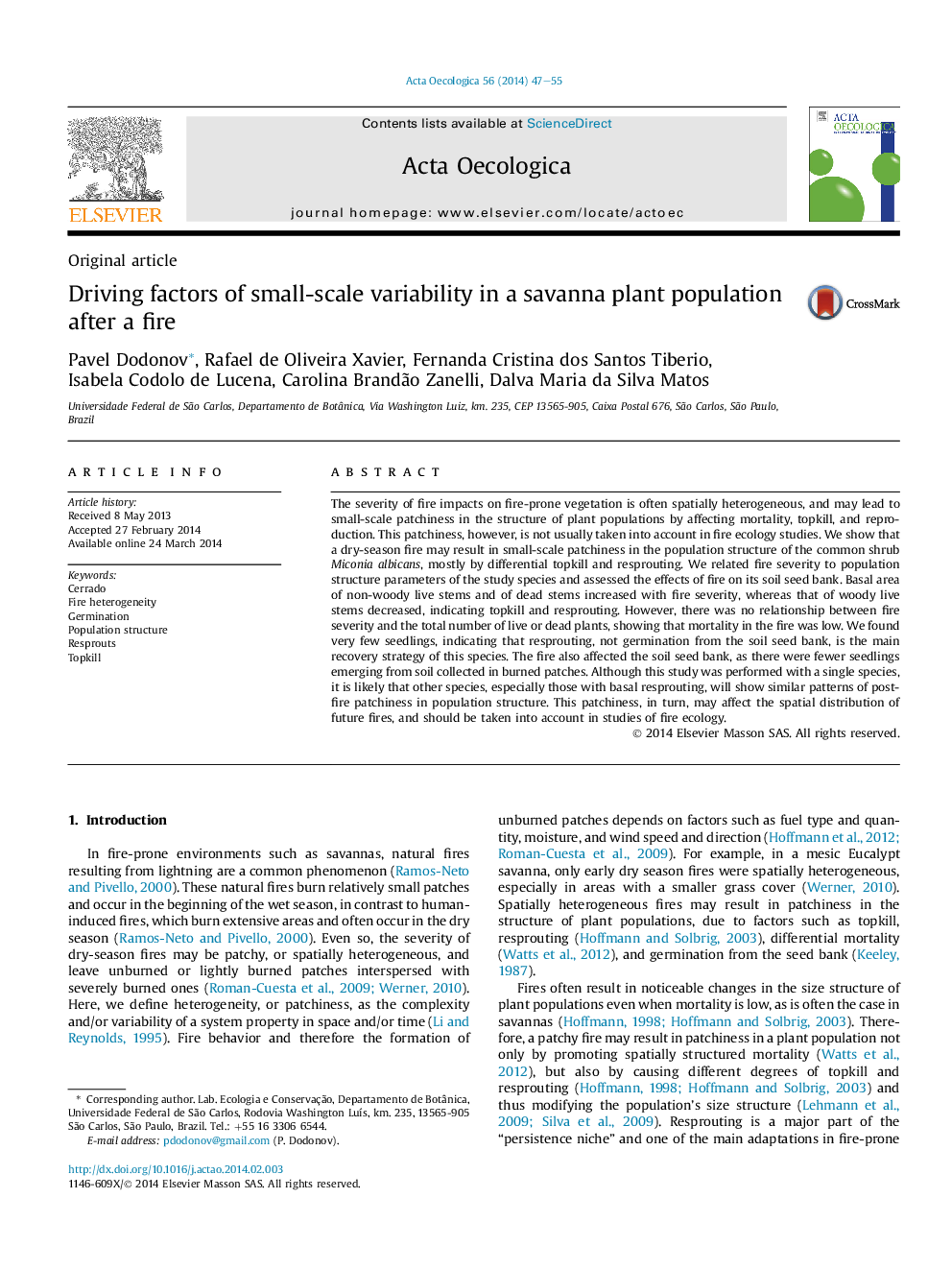| Article ID | Journal | Published Year | Pages | File Type |
|---|---|---|---|---|
| 4381026 | Acta Oecologica | 2014 | 9 Pages |
Abstract
The severity of fire impacts on fire-prone vegetation is often spatially heterogeneous, and may lead to small-scale patchiness in the structure of plant populations by affecting mortality, topkill, and reproduction. This patchiness, however, is not usually taken into account in fire ecology studies. We show that a dry-season fire may result in small-scale patchiness in the population structure of the common shrub Miconia albicans, mostly by differential topkill and resprouting. We related fire severity to population structure parameters of the study species and assessed the effects of fire on its soil seed bank. Basal area of non-woody live stems and of dead stems increased with fire severity, whereas that of woody live stems decreased, indicating topkill and resprouting. However, there was no relationship between fire severity and the total number of live or dead plants, showing that mortality in the fire was low. We found very few seedlings, indicating that resprouting, not germination from the soil seed bank, is the main recovery strategy of this species. The fire also affected the soil seed bank, as there were fewer seedlings emerging from soil collected in burned patches. Although this study was performed with a single species, it is likely that other species, especially those with basal resprouting, will show similar patterns of post-fire patchiness in population structure. This patchiness, in turn, may affect the spatial distribution of future fires, and should be taken into account in studies of fire ecology.
Related Topics
Life Sciences
Agricultural and Biological Sciences
Ecology, Evolution, Behavior and Systematics
Authors
Pavel Dodonov, Rafael de Oliveira Xavier, Fernanda Cristina dos Santos Tiberio, Isabela Codolo de Lucena, Carolina Brandão Zanelli, Dalva Maria da Silva Matos,
